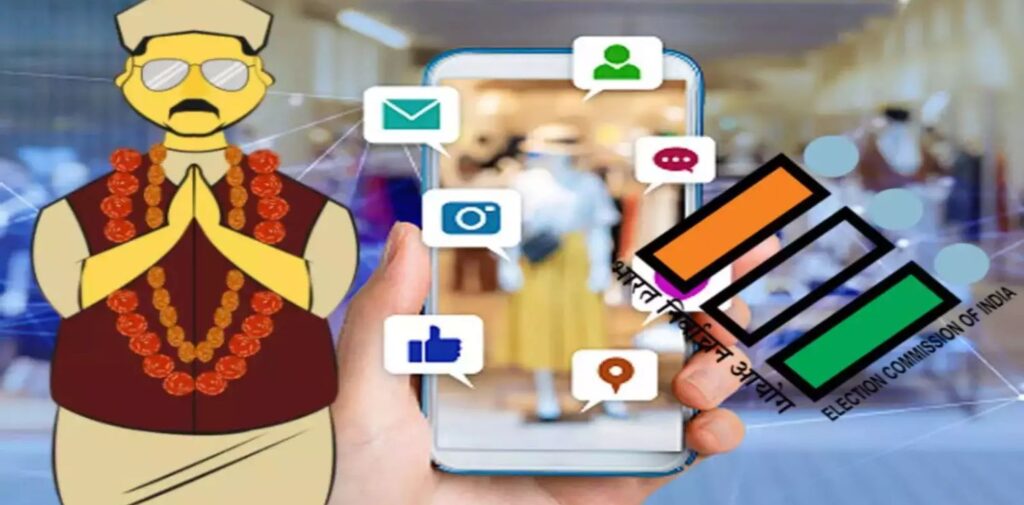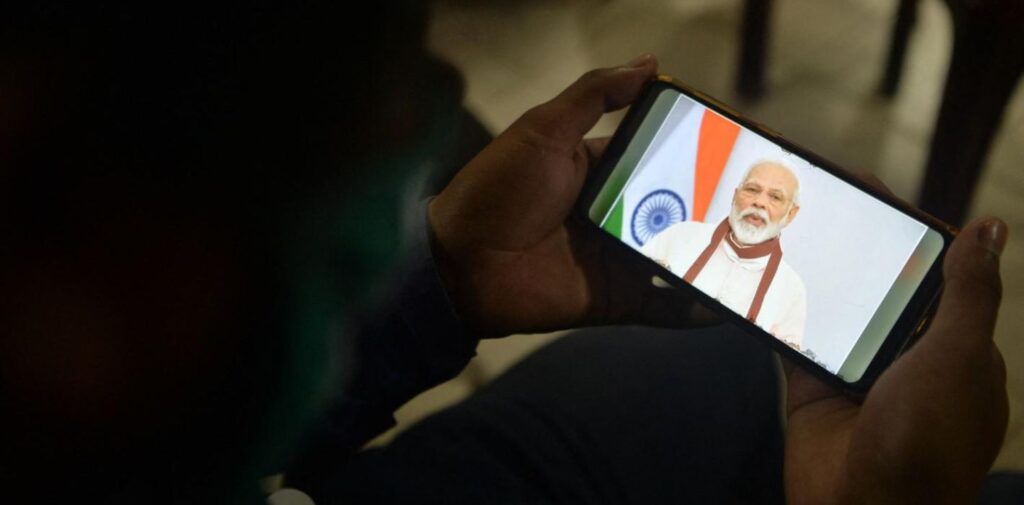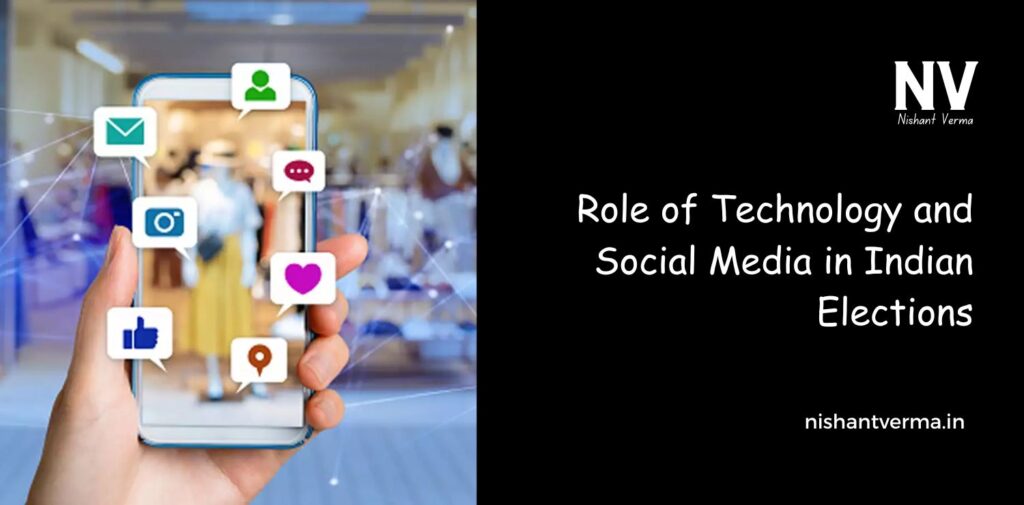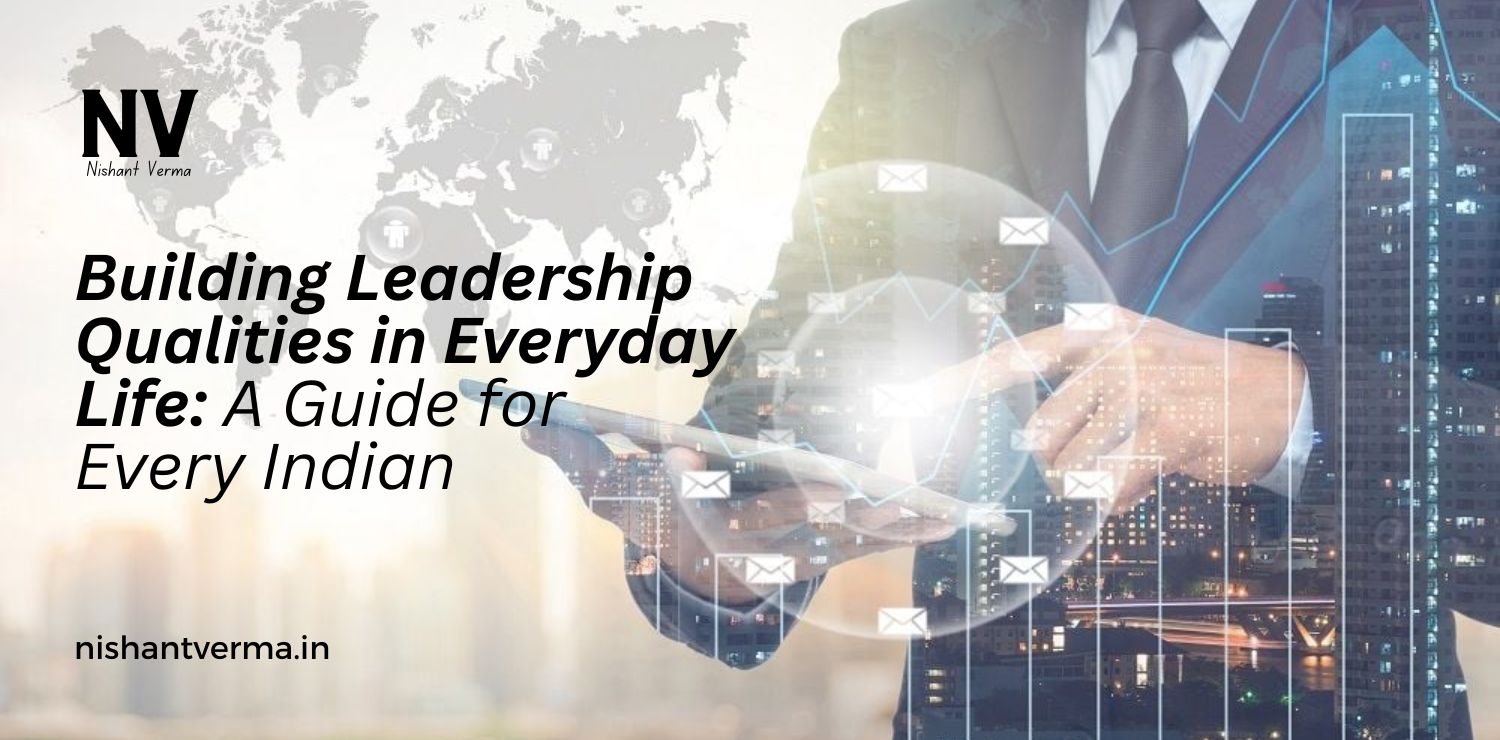Elections are an essential part of any democracy. In India, elections help people choose their leaders, who will then work to improve the country. Over the years, elections in India have changed a lot, especially with the rise of technology and social media. Today, technology plays a huge role in how elections are conducted, how voters learn about candidates, and how people decide who to vote for.
In this article, we will explore how technology and social media are changing the way elections happen in India and what impact they have on the country’s democracy.
What is Technology and Social Media?
Before we dive deeper, let’s first understand what we mean by technology and social media.
Technology refers to tools and machines that help people do things faster and more easily. In elections, technology is used for many things, like voting machines, counting votes, and gathering information.
Social media is a platform where people share information, ideas, and opinions with others online. Popular social media platforms in India include Facebook, Twitter, Instagram, and WhatsApp. During elections, social media is used by politicians, political parties, and voters to share news, videos, and updates.

How Technology Helps in Elections
Technology has made elections more efficient and transparent. In the past, counting votes could take days, and people could not easily check if the elections were being conducted fairly. But with technology, things are much smoother.
1. Electronic Voting Machines (EVMs)
In India, elections are often held using Electronic Voting Machines (EVMs). EVMs are machines that allow voters to cast their votes electronically instead of using paper ballots. This method is faster, cleaner, and more reliable. EVMs help reduce human errors and make the counting process quicker and more accurate.
For example, in the past, counting paper ballots would take several days, but with EVMs, votes can be counted in just a few hours. This helps in announcing election results much faster, which is crucial in a large country like India, where elections can involve millions of voters.
2. Voter Registration and ID Cards
Another important use of technology in elections is the voter registration system. In India, every eligible citizen must register to vote. This is done through the Election Commission of India, which uses technology to keep track of voter details and ensure that only those who are eligible can vote.
Voters are given a Voter ID Card, which contains important information like their name, age, and voting location. This card helps make sure that each person votes only once and helps prevent fraud.
3. Elections are Conducted Efficiently
Technology also helps election officials manage elections more effectively. For example, the Election Commission uses advanced software to organize the election process, keep track of voter turnout, and ensure that everything runs smoothly. Election officers can use mobile apps and other digital tools to communicate with each other and solve problems quickly.

The Power of Social Media in Indian Elections
Social media has become a very important tool in modern elections. It allows politicians, political parties, and voters to share information and discuss important issues. Let’s look at some of the ways social media has changed elections in India.
1. Reaching More People
In the past, political leaders had to rely on traditional methods like rallies, posters, and newspapers to reach voters. This could be expensive and time-consuming. But with social media, political leaders can directly communicate with millions of people at once.
For example, Narendra Modi, the Prime Minister of India, has a huge following on social media platforms like Twitter and Facebook. He often uses these platforms to share updates, campaign messages, and connect with voters across the country.
Social media helps candidates reach a wider audience, especially the younger generation. Many young people today are active on social media, and they get most of their information from these platforms.
2. Political Campaigns and Advertisements
Social media has also made it easier for political parties to run online campaigns. During elections, political parties spend a lot of money on advertisements, and social media is now one of the most cost-effective ways to spread their message.
For example, political parties may post videos, memes, or advertisements on platforms like Instagram, Twitter, and Facebook. These posts are shared with a large number of people, helping parties reach voters in all corners of the country.
3. Direct Communication with Voters
One of the biggest advantages of social media is that it allows voters to directly communicate with politicians. Voters can ask questions, express concerns, and even suggest ideas for improvement.
For instance, live streaming is a popular way for politicians to hold online discussions with their followers. Voters can watch these live sessions and comment or ask questions in real time. This makes the election process more interactive and engaging, giving voters a chance to have their voices heard.
4. Influence on Voting Decisions
Social media can also influence how people vote. During elections, people may come across a variety of opinions and information on social media. Politicians, celebrities, and influencers often share their views on social media, which can shape the opinions of voters.
For example, a popular actor or sports figure might support a certain political party or candidate. Their followers may be influenced by this endorsement and decide to vote for that candidate. Similarly, political parties use social media to spread positive stories about their achievements and criticize their opponents.
However, social media can also be used to spread misinformation and fake news, which can create confusion among voters. This is one of the challenges that comes with the power of social media in elections.
The Challenges of Technology and Social Media in Elections
While technology and social media have many advantages, they also bring some challenges.
1. Fake News and Misinformation
One of the biggest challenges of social media in elections is the spread of fake news. Sometimes, false information is shared online to confuse voters or damage the reputation of a candidate. Misinformation can spread quickly on social media, making it difficult to separate truth from lies.
For example, during the elections, people might share fake news about a candidate’s background or achievements. This can mislead voters and influence their decisions in the wrong way.
2. Digital Divide
Not everyone in India has access to the internet or smartphones. In rural areas, many people still rely on traditional media like newspapers and television for information. This creates a digital divide – a gap between those who have access to technology and those who do not.
Since social media is a primary source of information for many young voters, people without access to these platforms may be left out of important political discussions. This can affect the fairness of elections and create an imbalance in how different communities participate.
3. Security and Privacy Concerns
Social media platforms can sometimes be hacked or misused. There have been cases where personal information of voters has been stolen or used inappropriately during campaigns. Ensuring the privacy and security of voters’ information is essential for maintaining trust in the election process.

The Future of Technology and Social Media in Elections
As technology continues to improve, the role of social media and other digital tools in elections will only grow stronger. In the future, we might see even more advanced technologies like artificial intelligence (AI) and virtual reality (VR) being used in elections to engage voters and improve the process.
Online voting might also become a reality, making it easier for people to vote from their homes. This would especially help people living in remote areas or those who cannot physically go to a voting booth.
However, as technology advances, it will be important for the government and election authorities to address issues like fake news, security, and privacy to make sure that technology works for the people and not against them.
Conclusion
Technology and social media have revolutionized the way elections are conducted in India. They have made it easier for people to access information, communicate with politicians, and participate in the democratic process. However, there are challenges such as the spread of misinformation and unequal access to technology that need to be addressed.
As India moves towards the future, the role of technology and social media in elections will continue to grow, and it will be important to use these tools responsibly to ensure fair, transparent, and accessible elections for everyone. The combination of technology and democracy has the potential to create a stronger, more informed, and more connected India.




